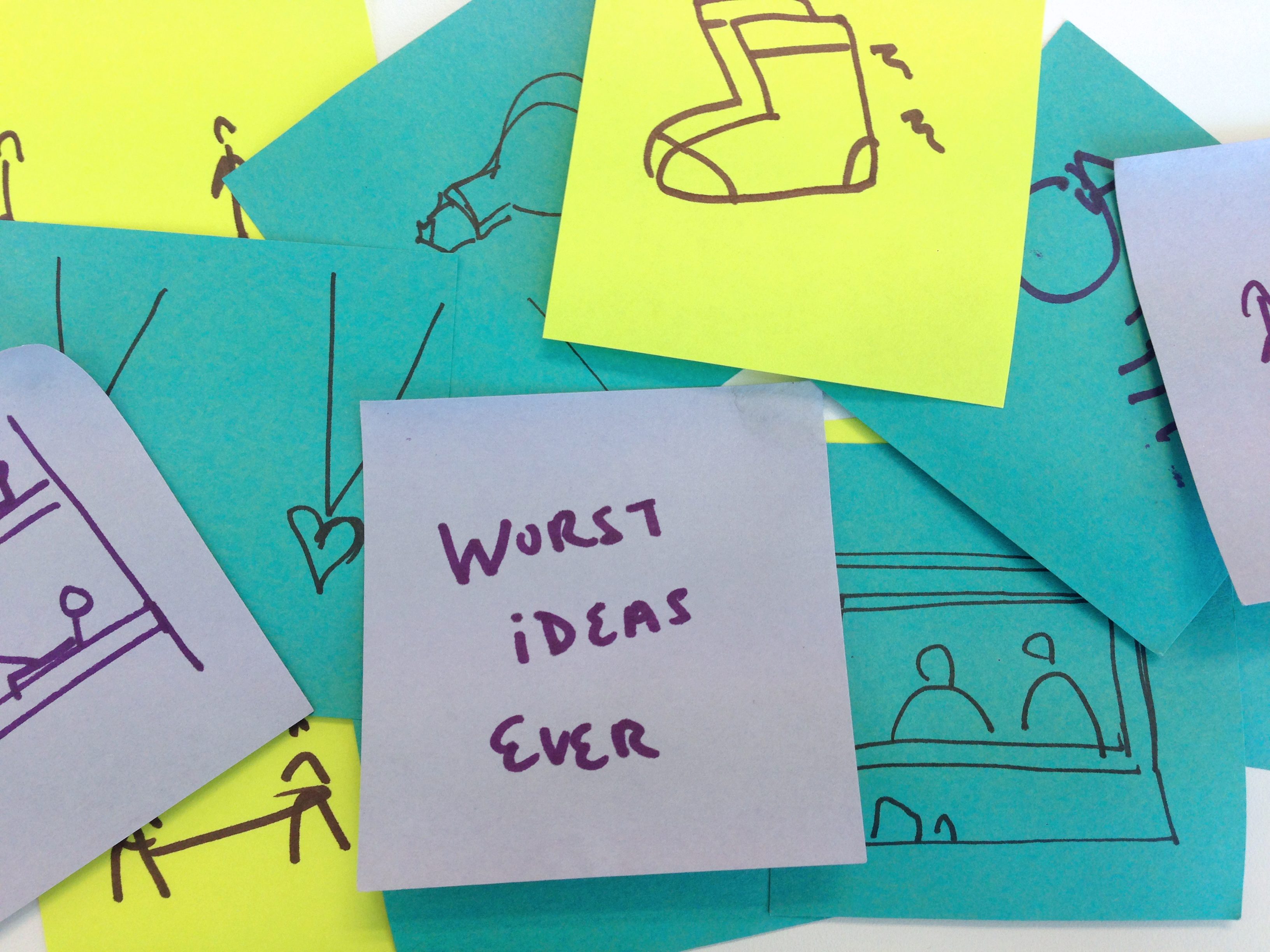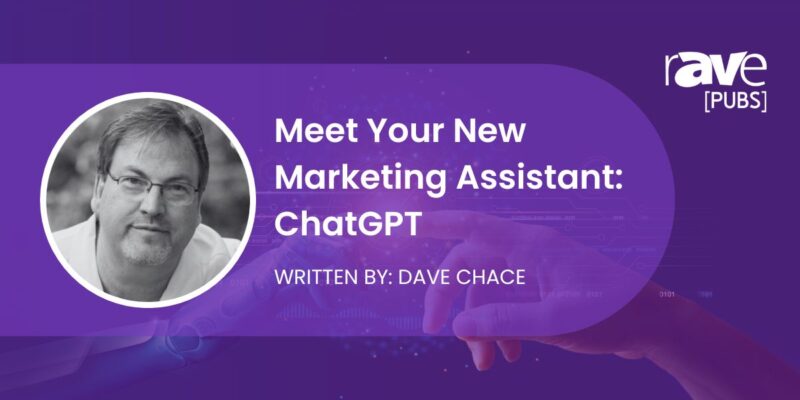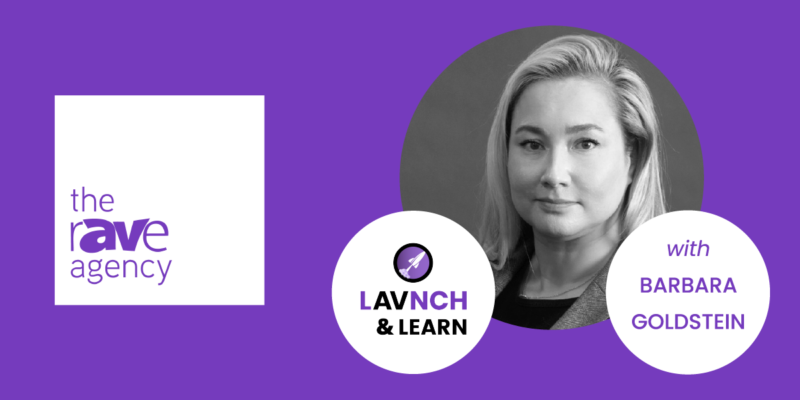AV’s Headlines Suck. Here’s How to Fix That.
 With fresh eyes on amazing new products and services presented over the last few tradeshows (InfoComm, DSE, ISE) so far this year, the rAVe Agency has seen some truly remarkable technology coming out of the audiovisual (AV) industry. But while AV technology is undoubtedly impressive, the way AV products are promoted and advertised has mostly been either underwhelming or overreaching. In short, AV’s headlines suck. Here’s how to fix that.
With fresh eyes on amazing new products and services presented over the last few tradeshows (InfoComm, DSE, ISE) so far this year, the rAVe Agency has seen some truly remarkable technology coming out of the audiovisual (AV) industry. But while AV technology is undoubtedly impressive, the way AV products are promoted and advertised has mostly been either underwhelming or overreaching. In short, AV’s headlines suck. Here’s how to fix that.
Amazing Products, Lackluster Headlines
After looking at the dozens of videos and hundreds of photos taken at these tradeshows and reviewing the video interviews with AV spokespeople, the patterns are almost universal: a laser-focus on the tremendous technology instead of the fantastic advantages for the end-user. How does this happen? Because engineers are incredible at developing a product but are lousy marketers. Instead of presenting the value for end-users, the text descriptions and droning demos on the show floor regurgitate specs and technical minutiae.
How does this happen? Because the first marginally good idea is often the one that is used to promote the newest product or service for AV vendors.
The result, unfortunately, is lackluster ads, product webpages, product PDFs and even social media promotions, which fail to deliver because they’re either overhyped or underwhelming headlines.
One way to avoid both the negative sentiment of many readers and to generate on-point headlines is to not stop at the first good headline idea. In fact, if marketers will discipline themselves to write ten versions of the same headline, quite often the ‘bad ideas’ lead to some of the best ideas to grab attention and accurately depict the value of content for the reader.
Deliver on the Brand Promise
A brand’s marketing promise tells the potential buyer what value to expect from the vendor. Far beyond features and benefits, the brand promise is the value proposition of tangible and intangible characteristics realized as a result of purchasing from the brand.
Unfortunately, the AV industry has a pattern of promoting features and benefits of specific offerings instead of establishing a consistent and unique brand promise. For example, at recent tradeshows, the focus on promoting new products generally highlights the typical ‘feature and benefits’ marketing schlep with all the subtlety of an elephant prancing around the booths. Features and benefits are good information points to share, but when leading with these, it devalues the offering and ends up with transactional, commoditized thinking for the end user. Instead, leading with the value proposition (what’s in it for the end user?) can both align with the company’s brand promise and focus on the user’s needs — a win-win best-case scenario!
Powerful headlines and compelling copy are a craft which takes time to deliver. Just as rushed engineering leads to problematic design compromises, hurried copywriting results in lackluster headlines and weak product pitches.
The time-honored practice of diligent copywriting is often rushed due to the increased demand for more content than ever, as 60% of marketers create at least one piece of content each day (Source: eMarketer). Taking the time to write (and rewrite) not only leads to better copy, but helps to highlight content in ways that benefit click-through rates, search engine optimization (SEO), and new leads (Content marketing costs 62% less than traditional marketing and generates about 3 times as many leads. Source: DemandMetric).
10 Versions Will Fix Headline Suck
When one or even two marketers take the time to craft ten versions of the same headline, the mashup of ideas reveals the best combination of words and phrases to position the content itself.
A survey (Source: OrbitMedia) found that about 50% of marketers spend between one and three hours creating a content piece for blogs with a length of around 500 to 1,000 words and the other 50% of marketers spent six or more hours for the same amount of content. But the big insight is that additional time pays off.

Marketers who take more time to develop content report a much higher value in the outcome of the content. | Source: OrbitMedia
Writing ten versions of the same headline/subject line is harder than it may sound. At first, writing two or three headlines may seem sufficient, but marketing copywriters will find that coming up with the fourth through seventh versions to be far more difficult. The last few options quite often end up being amalgamations of the previous versions, *but what’s most helpful is how the seemingly ‘bad ideas’ spur the imagination to craft even better options.*
 There’s actually a method called “The Worst Possible Idea,” by author Bryan Mattimore, which is explored in his book Idea Stormers. His technique provides disruptive insight within the ideation process, where the worst ideas often spur imagination to lead to the best ideas.
There’s actually a method called “The Worst Possible Idea,” by author Bryan Mattimore, which is explored in his book Idea Stormers. His technique provides disruptive insight within the ideation process, where the worst ideas often spur imagination to lead to the best ideas.
The pushback is that marketers feel they do not have the time to go through this exercise each and every time they create new content or repurpose content across different channels and mediums. In fact, almost 60% of marketers reuse content two to five times to generate ‘snackable’ content based on assets. (Source: LookBookHQ).
If a marketer is already feeling overwhelmed by the volume of work, does taking even more time away from new content just add to their perceived burden? In the short run, it does add a little more time to the process of publishing content. However, developing compelling content is a significant investment in effort from the marketing team, including copywriting, design, copyediting and publishing, so the long-tail return on that investment is better-performing content.
After all, if taking 10 minutes to come up with ten versions of the essential part of the content — the title/headline/subject line — yields better results, the time investment pays handsome dividends.
AV’s Headline Tips
Sorting through the research, we found a few useful tips based on data from surveyed marketers with successful outcomes. Here are some valuable tips about writing truly outstanding marketing headline copy:
- Keep it Short — 11-13 words seems to be ideal, though shorter often works best
- Use first person or second person and A/B test the results to check performance with your audience
- Create urgency only when it clearly makes sense (false deadlines are often viewed as pushy or even underhanded)
- Use active verbs instead of passive verbs
- Be specific with action verbs and pronouns
- Be memorable to help people associate your brand with compelling content
Even This Article Went Through 10 Versions
This article went through the same ten-version process to arrive at the headline “AV’s Headlines Suck. Here’s How to Fix That.” Would you have chosen it out of the list of ten headline options below?
- AV’s Tradeshows Showcase Lackluster Marketing
- AV Marketing Needs Help
- Features and Benefits Lead to Commoditized Thinking
- Avoid Features & Benefits to Stop Sucking at AV Marketing
- AV Marketing at Tradeshows Sucks
- AV Industry Marketing Lackluster at Tradeshows
- The AV’s Tradeshow Headlines Suck, But It Doesn’t Have To
- AV’s Lackluster Marketing at Tradeshows Doesn’t Have to Suck
- AV Tradeshow Marketing: Where’s the Value Proposition?
- AV’s Headlines Suck. Here’s How to Fix That.
Was your experience with the tradeshow product pitches similar to Anthony’s? Comment below.






